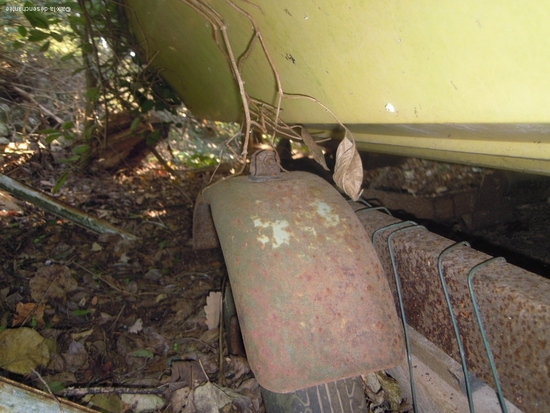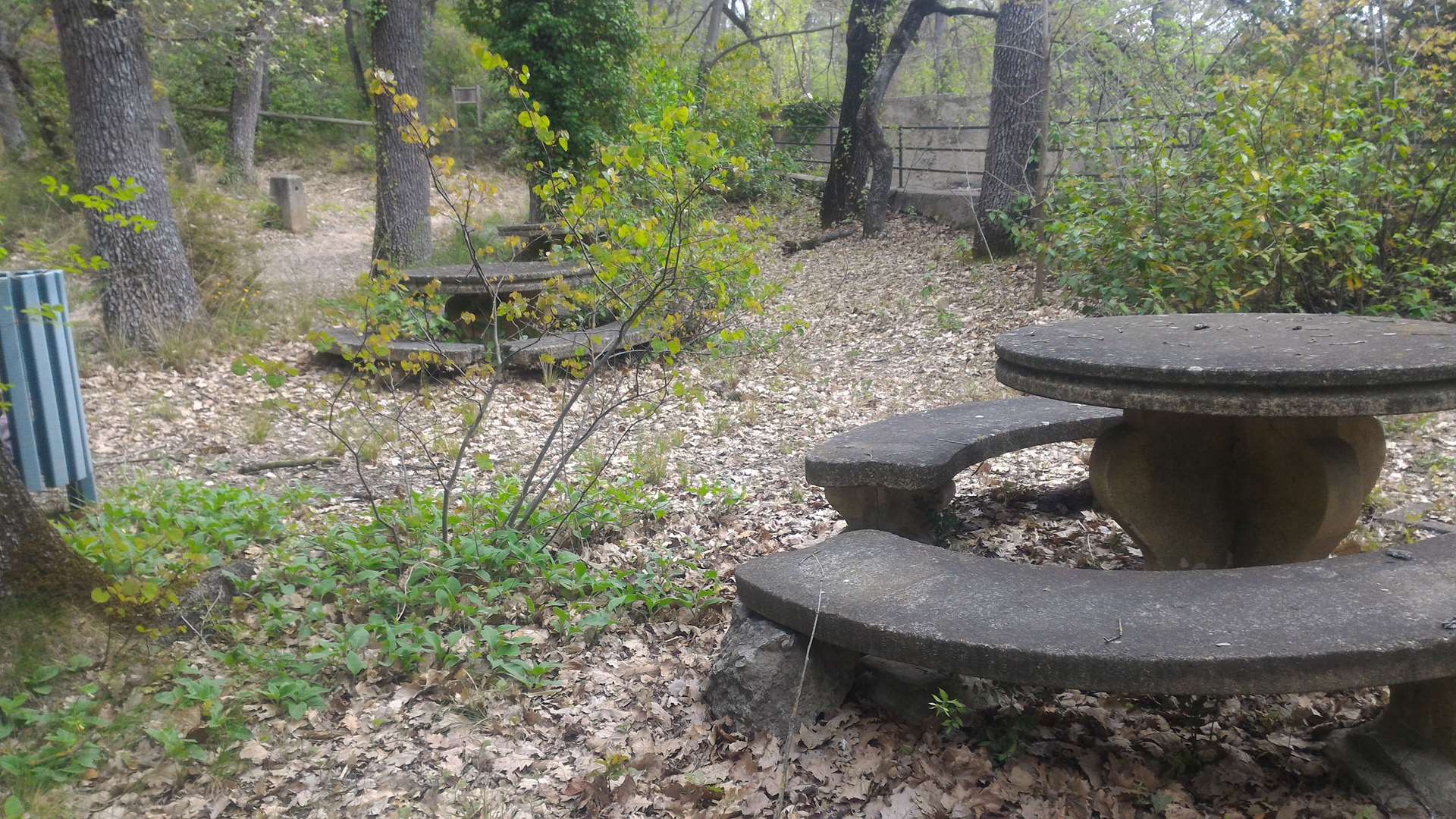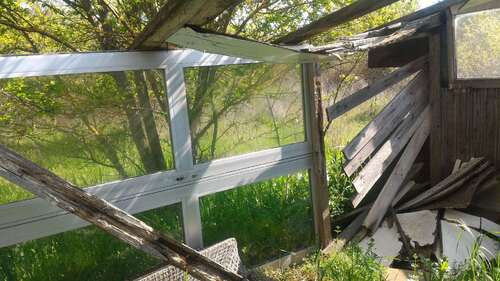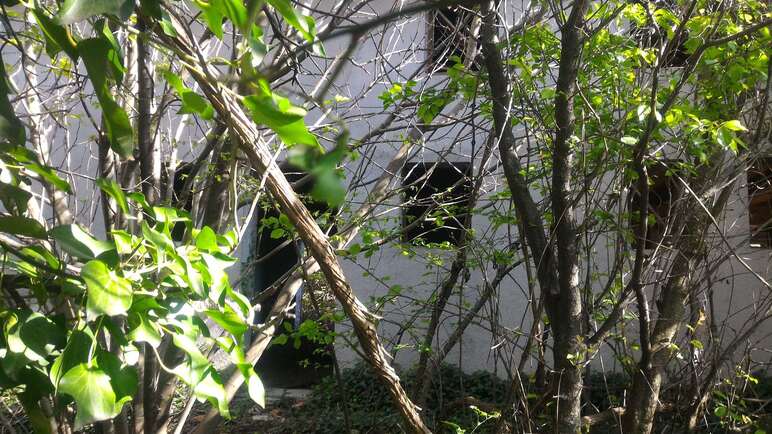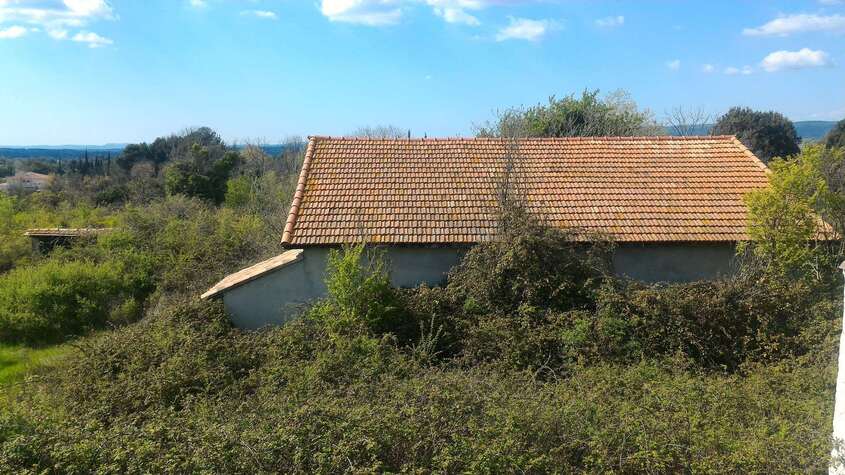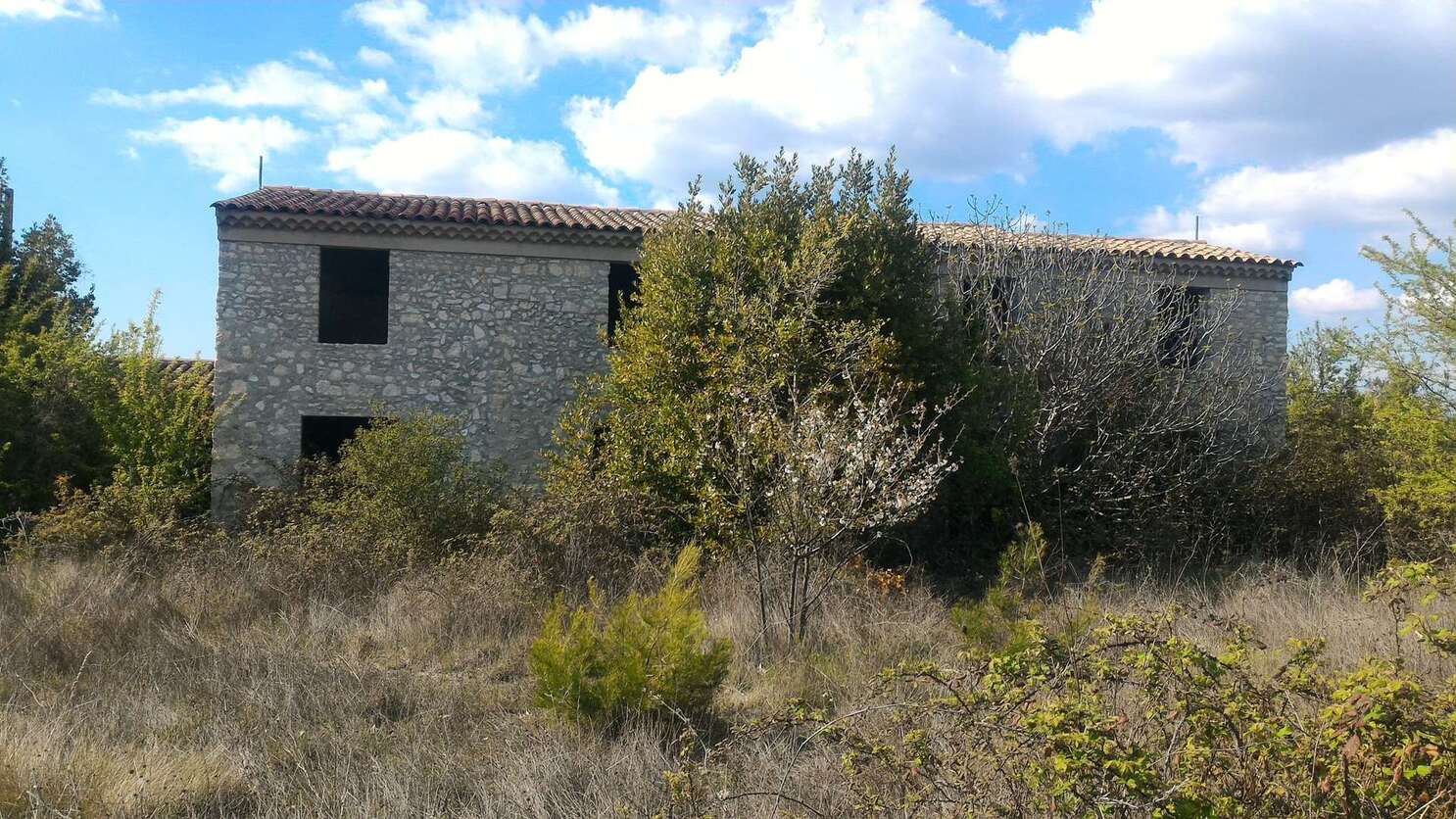-
Well hidden under thick vegetation, the "Malouesses boat" - the future Polyclinic of Aix-en-Provence - will probably be one of the last parts of the estate to be dismantled.
There is no doubt that this neighbour, who has since sold his home, will never return to Quebec to take the car to the waters of his native country.
Some pictures of this relic worthy of a background of Platoon.
 votre commentaire
votre commentaire
-
From valleys to hills (all title of this text are titles songs of Jean Ferrat, a 70's French singer)
At the discovery of the Durance from Aix-en-Provence, the passage on the Mirabeau Bridge is like an organ. Close by, a woman once named Anne became a Saint.The poor woman, guardian of sheep, held a holy relic in her cottage, so that a cult was devoted to her when she died.
Besides the construction of a chapel, the memory of his home remained under the name of the "Logis d'Anne".
This place represents for the visitor, the motorist, a simple portion of national road no. 96, between the end of the village of Peyrolles and the Mirabeau Bridge.

View from the Camp of Logis d'Anne
Yet, overlooking the Durance, a few meters away was still a whole village a few years ago.
The bastide named Logis d'Anne has nothing to do with the disappeared urban complex.
Moreover, the building, although 250 years old, is still very visible, restored from owner to owner.
Across the street, in the Durance River, the barracks, the buildings have disappeared.
From the forest hamlet originally built for the workers of the Canal de Provence nothing remains.
My FranceIn 1948, the construction of the Canal de Provence employed many workers. The water supply structure was dug in a rural area.
This specific context involves the construction of a living space dedicated to the reception of performers for a project planned over several years.
The site chosen at the place called Logis d'Anne is a plateau overlooking the Durance and surrounded by forest. The buildings are quickly built.
Made of wood, fibro cement and asbestos, the houses are spartan.
Returning from the toil, those who allowed Provençal France not to dry up found in these places a moment of respite.
The work ended, the workers returned who to their countries, who to their regions. At the arrival of the returnees from Algeria in 62, only the hairdresser,
of what was becoming the "Camp de Harkis du logis d'Anne", had remained there with eight or nine other workers of the Canal.
From 1962, military trucks brought these new inhabitants in waves. Sorted" at the Camp de Rivesalte, women, children, men, entire families were dispatched across
France. Among the destinations of SONACOTRA: "Le Logis d'Anne".
Their ways are multiplying to become one
The allocation of dwellings was organized by the site manager, SONACOTRA. As a good administrator, he distributed the barracks according to the numberof people in the homes. The exiles had then to hastily appropriate what was akin to forest hutnnes - like those visible in this subject shot for a television news
in 1976 titled "Les Harquis du Logis d'Anne à Jouques" in: http://www.ina.fr/fresques/reperes-mediterraneens/Html/PrincipaleAccueil.php?Id=Repmed00410.
For others closer to the national road, the housing context was a one-storey prefabricated building.

Very quickly a hundred families were established at the Logis d'Anne - the population was about 800 people.
For these individuals victims of violent uprooting, the fall was harsh.
Laid in the middle of nowhere, more than eight kilometers from the first village, integration solutions were quickly reduced. In addition,
the aesthetic of the village has not been greatly improved since the time of the creators of the Canal de Provence.
There were a few roads in the pine forest, some upper houses built in the mid-1980s, but nothing significant, sustainable.
The withdrawal of the community into itself was inevitable, as organized by society.
The girls want to go to the dance
To the harshness of the winters of Provence, the returnees had only to oppose the little poet Gaudin included in the government’s trousseau.Outside, it was far away, from a social point of view as well as from a geographical point of view.
As a disgrace, these men, some of whom honored France by their participation in the fighting, were thrown away: hidden in the woods.
At the bus stop, on the edge of this never-ending highway, the stop was optional: for some drivers, as for so many other locals, this "d'Appache" population
of Harkis was scary.
As such, the communal school of Jouques provided schooling for the children of the Logis d'Anne only from the fourth grade.
As a good neighbour, the EDF Canal plant, connected to its former workers' village, had the road condemned.
Those at the Logis d'Anne could hardly count on the improvised football field on the field of a sympathetic peasant, on the other side of the national.
At the top, under the trees, the baker’s Citroën pick-up truck honked a semblance of humanity just like the open-air christening or wedding ceremonies
in the gardens invented by each other.
Autumn has just arrived
After the haste to return, everything was an illusion. This land, this refuge, far from being acquired, remained only a support, because even if one dies there at theHamlet of the Logis d'Anne one remains, buried in the embarrassment, at the cemetery of Jouques.
In the small village, on which the "Camp de Harkis" depends, most of the inhabitants remain hostile to these "foreigners".
This distancing forces many exiles to be inactive. Local employers at the time were reluctant to hire "Logis d'Anne".
From the manufacturer of industrial charcuterie to public works contractors specializing in the construction of nuclear experimental sites, all seem to ignore
the newcomers. For the latter, the escape is then inevitable at least for those who still force it.
A wave of expatriation instead of the 1970’s to 1980’s to destinations like Belgium, Paris or Aveyron.
Others among the youngest, make the Logis d'Anne a landmark. In their twenties, they set out to discover the world.
Their intermittent return allows the band to open up to other cultures, especially through the music of the 1970s. Dances sometimes take place.
Some of them are set back and share an air of jazz, a tube of Led Zepplin.
Stricken to the bone, wounded in their flesh, the Patriés du Logis d'Anne cultivate with power the knowledge brought - in support of this subject shot for a television
news in 1991 showing the involvement of the "young people of the Logis d'Anne" in the Harkis in cause : http://209.85.229.132/searchq=cache:SiXAKn25FOkJ:www.harki.net/article.php%3Fid%3D415+%22logis+d%27anne%22&cd=9&hl=fr&ct=clnk&gl=fr.
Weakened socially by forced isolation, the community asserts itself politically galvanized by the blows received, made strong by the exercise of dissent.
Closed definitively in 1998, the Forest Hamlet of the Logis d'Anne was gradually destroyed.
From this place, from the laughter of kids playing in their huts, from these discreet lovers from the bottom of the woods there are only a few scattered materials.
The prudent society has broken down to the scales of service of the small barracks. Around, the calm of before 1948 came back with the sound of cars fleeing
on the highway.
Over a coffee in Peyrolles, the youngest of the Elders of Logis d'Anne are nostalgic.
For some, the ascent of the abandoned path, smashed a thousand times by the machines of destruction is a sacred ritual.
Past the fences placed so that we forget, "everything becomes again the space of a moment as before".
On the spot in the shadow of the hundred-year-old pines, the childhood film is back on track.
New ones all huddled against each other, alone against almost all, so far in this forest.

"Autumn 1974, the children of Harkis of the "Logis d'Anne" on the commune of Peyrolles in Provence (France 13) understood that if they want something,
they too must revolt against the military regime in the camps, extreme poverty, unemployment, and the racism of these «French Muslims" legend and photo in:
www.gerard-bonnet.com/.../<wbr>6965/most_visited</wbr>

 votre commentaire
votre commentaire
-
-
Par meliflore dans MAISONS ET DOMAINES ABANDONNEES - HOUSES AND ABANDONED AREAS le 25 Avril 2021 à 22:16
La cabane du marginal au fond du terrain
The hut of the marginal at the bottom of the ground
 votre commentaire
votre commentaire
-
Par meliflore dans MAISONS ET DOMAINES ABANDONNEES - HOUSES AND ABANDONED AREAS le 25 Avril 2021 à 22:07
 votre commentaire
votre commentaire








